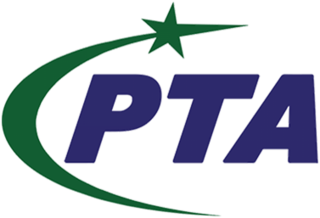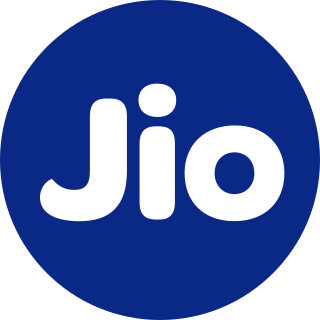4G is a generation of standards for mobile telecommunication.
4G may also refer to:
G4 or G.IV may refer to:
4G is the fourth generation of broadband cellular network technology, succeeding 3G and preceding 5G. A 4G system must provide capabilities defined by ITU in IMT Advanced. Potential and current applications include amended mobile web access, IP telephony, gaming services, high-definition mobile TV, video conferencing, and 3D television.
X2 may refer to:
Toast most commonly refers to:
A generation is "all of the people born and living at about the same time, regarded collectively."

The Pakistan Telecommunication Authority (PTA) (Urdu: پاکستان ٹیلی کام اتھارٹی) is the telecommunication regulator of Pakistan, responsible for the establishment, operation and maintenance of telecommunication systems and the provision of telecommunication services in Pakistan. Headquartered in Islamabad, PTA also has regional offices located in Karachi, Lahore, Peshawar, Quetta, Muzaffarabad, Rawalpindi, Multan and Gilgit.
Transformers is a franchise centered on shapeshifting alien robots.
NGMN may refer to:
Xi may refer to:
Droid or DROID may refer to:
EE is a British national mobile network operator and internet service provider, which is a brand within the BT Group. EE is the second-largest mobile network operator in the United Kingdom, with 21.7 million customers as of September 2022.
3G is a generation of standards for mobile telecommunication.
Fourth generation may refer to:

The iPad is a tablet computer, developed and marketed by Apple Inc. The third device in the iPad line of tablets, it added a Retina Display, the new Apple A5X chip with a quad-core graphics processor, a 5-megapixel camera, HD 1080p video recording, voice dictation, and support for LTE networks in North America. It shipped with iOS 5, which also provides a platform for audio-visual media, including electronic books, periodicals, films, music, computer games, presentations and web browsing.

The second generation Moto E is an Android smartphone developed by Motorola Mobility. Released on February 25, 2015, it is a successor to the Moto E released in 2014. The New Moto E is a low-end device for first-time smartphone owners or budget-minded consumers, and is available in 40 countries worldwide.
The Incredibles is a 2004 American computer-animated superhero film.

Reliance Jio Infocomm Limited, doing business as Jio, is an Indian telecommunications company and a subsidiary of Jio Platforms, headquartered in Navi Mumbai, Maharashtra, India. It operates a national LTE network with coverage across all 22 telecom circles. Jio offers 4G and 4G+ services all over India and 5G service in many cities. Its 6G service is in the works.
5G NR is a new radio access technology (RAT) developed by the 3rd Generation Partnership Project (3GPP) for the 5G mobile network. It was designed to be the global standard for the air interface of 5G networks. It is based on orthogonal frequency-division multiplexing (OFDM), as is the 4G long-term evolution (LTE) standard.
Nokia 105 is the name of a series of different mobile phones manufactured or marketed by Nokia. Models earlier than the 2021 4G version communicate on second-generation cellular (2G) networks only, rather than later standards such as 4G, and will no longer work when 2G networks are phased out, as has been happening since 2016 in different regions.